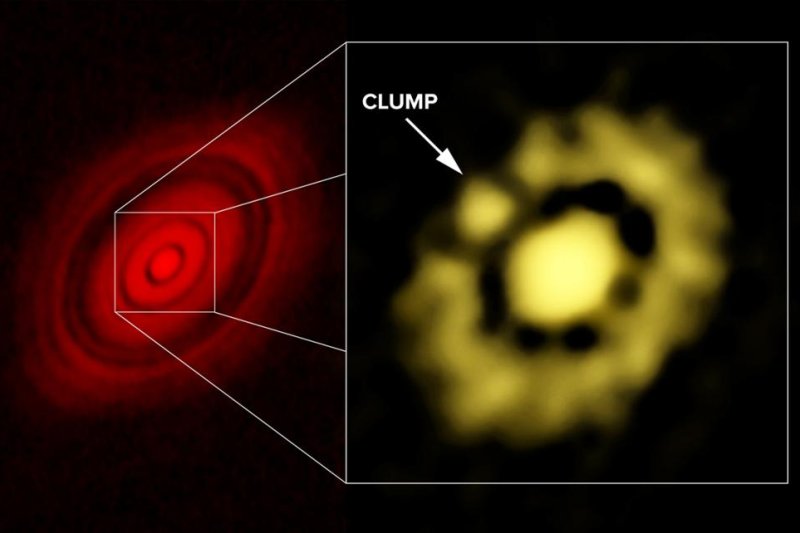Very Large Array images helped astronomers identify a unique clump in the inner portion of HL Tau's protoplanetary disk. Photo by NRAO/ALMA/VLA
CHARLOTTESVILLE, Va., March 17 (UPI) -- New stellar imagery showcases what scientists believe are the earliest stages of planet formation.
The star HL Tau, which lies 450 light-years from Earth, is just one million years old -- an infant in cosmic time. An image collected by Atacama Large Millimeter/submillimeter Array in 2014 showed orbital lanes beginning to form in HL Tau's circumstellar disk of gas and dust.
The lanes suggested the star's circumstellar disk was also a protoplanetary disk.
But ALMA was only able to offer a limited view of the thicker inner portion of the disk, so astronomers turned to the Very Large Array, which absorbs longer wavelengths. VLA's more detailed imagery identified a unique amalgam of dust roughly three to eight times Earth's mass.
"We believe this clump of dust represents the earliest stage in the formation of protoplanets, and this is the first time we've seen that stage," Thomas Henning, an astronomer at the Max Planck Institute for Astronomy, said in a news release.
"This is an important discovery, because we have not yet been able to observe most stages in the process of planet formation," explained Carlos Carrasco-Gonzalez, a researcher with the Institute of Radio Astronomy and Astrophysics at the National Autonomous University of Mexico.
"This is quite different from the case of star formation, where, in different objects, we have seen stars in different stages of their life cycle," Carrasco-Gonzalez added. "With planets, we haven't been so fortunate, so getting a look at this very early stage in planet formation is extremely valuable."
The new VLA data suggests HL Tau's inner protoplanetary disk features dust grains with diameters as large as one centimeter. Researchers believe Earth was formed by the accumulation of dust grains in the inner portion of the sun's protoplanetary disk.
Astronomers hope additional imaging and analysis of inner circumstellar disks will further illuminate the process of early planet formation -- specifically, the formation of Earth-like planets.
"These VLA observations are the most sensitive and show the most detail of any yet made of HL Tau's disk at these longer wavelengths," said Claire Chandler, of the National Radio Astronomy Observatory. "The VLA's ability to produce such high-quality images in this region is very important to advancing our understanding of these initial stages of planet formation."















